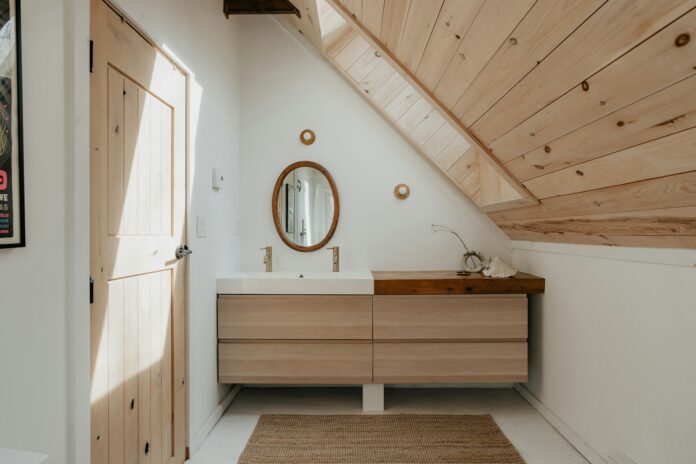As the old Danish proverb goes, ‘’if you build according to every man’s advice, you will have a crooked house’’.
Should yours be feeling increasingly off-kilter and you’re looking to move on, then we hope you’re ready for just one more round of advice. This time, not on how to build the damn thing, but rather, how to prepare your house for sale.
It’s all about maximising the potential of your property, putting its best foot forward and best face on show, all in order to appeal to the broadest range of potential suitors. We’re sure we don’t have to tell you how tough and stressful selling a house can be, even at the best of times. And these are most certainly not the best of times. In fact, the Property Reporter published findings at the end of 2020 which showed that ‘’Covid chaos’’ had caused over half of sales to fall through.
Interestingly, a third of those cancelled sales involved the buyer changing their mind and pulling out of the deal after a viewing. If that doesn’t highlight just how important those first viewings are, we don’t know what will. To make those first impressions truly count, here’s how to prepare your house for sale before putting it on the property market.
RESEARCH
If you are going to be putting up your house for sale, then you should know as much about the local property market as possible.
Evaluate the asking price of similar properties in the area, and assess from afar (or even in person, doing a little reconnaissance work) their strengths and weaknesses, to develop a relatively accurate estimate of your own home’s price and position within the market.
If you search the term ”sell house quick in London”, you’ll notice that the average property sale time in the city takes 3 to 6 months. Making a similar search concerning property sales in your area will provide you with a little background information on what to expect moving forward.
CLEAN
There’s no point deliberating over the most minuscule of aesthetic considerations if your house as a whole is untidy or unclean. Getting out the spirit level out to straighten up your bathroom mirror, burnishing the door handles, spraying eau de’ freshly baked bread around the house…all of this can wait.
First and foremost, you need to undertake a comprehensive, all encompassing cleaning operation of your house, from top to bottom. It’s worth investing in a professional cleaning service. Though the initial outlay is, of course, more than if you were to undertake the job yourself, the added value to your home can’t be understated. A clean house inspires confidence in buyers and establishes trust early on.
Dust, dirt, a dishevelled appearance, or even a lurking, unpleasant aroma, can be enough to deter a sale, both noticeably and subconsciously.
REPAINT
‘’Nothing a lick of paint won’t fix’’….though it’s an exclamation often said with more than a hint of irony attached, it does bear some truth. Fresh paint, and even the smell of it, can make a property feel fresh and modern, and more importantly, serves to depersonalise the space sufficiently to enable potential buyers to imagine themselves living in the property. More of that later, by the way.
The best way to do that is to paint your house in a neutral colour which facilitates viewer visualisation and offers the impression of a ‘blank slate’ ready to be reimagined. In 2016, Asda Good Living published an article discussing the results of a survey made by home improvement website Zillow Digs. The findings revealed a fascinating insight into the impact of colour scheme on the overall value of a property. They discovered that ‘’Warm neutrals fared the best, with yellows and light greys increasing the value of homes’’.
Interesting, sure, but even more enlightening were the colours which detrimentally affected a home’s value; a dark grey dining room lowered the value of a house by around £850, kitchens painted off-white or eggshell caused a £62 reduction, painting your bedroom brown knocks about £180 off the value, and painting your living room terracotta decreases a home’s value by approximately £600. Wow!
Ideally, you should paint both the inside and outside of your house, and that includes your front door; according to Country Life, blue and green are the best front door colours for selling a house. Both the exterior and interior are a reflection of the state of your property, and speak volumes (superficially, we know) about the state of the house as a whole.
REPAIR
Another thing every homeowner should do when listing their house on the real estate market is to repair any underlying issues which might be lurking (or even be visible), to enhance the viewer’s overall impression of the property and instil confidence as you move through the property and then hopefully through the motions of a sale.
According to repairpricer.com/home-inspection-checklist/, you should first inspect the property from the eyes of a potential buyer, focusing on five separate areas of the home specifically, checking that each is in their best possible state and that there is no obvious damage or underlying issues. These are:
- Your grounds (if you have an outdoor space)
- The structure of your home
- Its exterior surfaces
- Its windows, doors and wood trim
- The roof
Ensuring there is no damage, both superficial or structural, will optimise the value of your property.
IMPRESS
First impressions matter significantly, whether you are talking about people or about properties. If you want to make a good first impression when selling your house, it’s essential that you improve its kerb appeal; that is, the attractiveness of your property when viewed from the drive, front garden or even from the street.
Rather than witter on and distract you from sprucing up your house, we’ll redirect you to this super useful article from the experts at *checks notes* IDEAL Magazine on 5 ways to improve your home’s kerb appeal.
DEPERSONALISE
You will likely still be living in your house whilst going through the process of selling it. However, it is paramount that you depersonalise the house if you are going to enter the real estate market. Buyers will be unable to visualise themselves in your home if it is too personal and geared towards your niche tastes and offbeat lifestyle.
It’s wise, at the very least, to remove family photos, any provocative artwork, and any memorabilia or equipment relating to your hobbies. The potential buyer wants to imagine their future life in the property, not your current one.
To make things that little bit easier for potential buyers, get rid of (or hide) excess stuff that you’ve accumulated throughout the years, making your place appear more spacious and allowing a little imaginative reinterpretation of the layout in the viewer’s mind. Also important, if you have bulky furniture that makes the room feel small, consider removing it and replacing it with smaller furniture, even if it’s just on a temporary basis.
Prospective buyers should walk into a clean, impersonal and preferably sterile environment when they visit the house. You should only leave items that enhance the ‘liveability’ of the space and don’t leave a personal impression.
ORGANISE
For those places in the home where you decide to stash your stuff, you should make sure that they are immaculately organised, even if they are out of view. Buyers are certainly going to evaluate the storage spaces in a home, peeking in cupboards and opening drawers and doors, and you don’t want them to find any areas looking messy. Ultimately, this can give off the impression of a stressful, difficult to manage property.
Fortunately, you can eke out storage space in even the most compact of properties; check out these tips on ways to make space using decluttering and self-storage for some inspiration.
CAPTURE
The truth is that the first (and majority) of public appraisals of your property will take place online. This means that the quality of the photos that you take of your home hold huge importance. As such, it’s worth hiring a professional photographer to take high-quality pictures of your home; they’ll be able to find the right angles to make it appear as spacious, light and clean as possible.
On the flip side, by taking blurry, out-of-focus photos of your property, you’ll be doing the place and ultimately, its value, a disservice. Make sure these photos count.
Should you be keen to speed up the process, then check out these 5 tips for selling your house fast.





